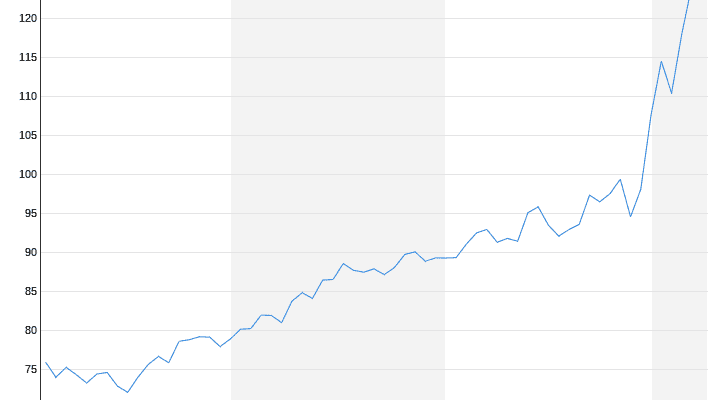Response to Ukraine war
Roller skating on Wall Street
03/08/2022 11:13 p.m
Attempts at recovery on Wall Street petered out. Above all, the renewed sharp rise in energy prices put a spanner in the works for the shares. Investors are persistently concerned about inflation and the economy due to the continued rise in oil prices.
The news surrounding the war in Ukraine has sent Wall Street on a rollercoaster ride. Initial attempts at stabilization quickly fizzled out in the face of soaring oil prices and ongoing Russian attacks on Ukrainian cities. Around noon, prices turned positive and rose sharply when Ukrainian President Volodymyr Zelenskyi announced that he was no longer insisting on his country’s NATO membership. However, the profits soon crumbled, especially as inflation and economic concerns stubbornly persisted due to further increases in oil prices. The fact that US President Biden officially announced an import ban on Russian oil and gas hardly slowed the rise.
the Dow Jones Indexwhich slipped into correction mode the day before for the first time in two years, was down 0.6 percent at the close of trading. S&P 500 and Nasdaq Composite fell 0.7 and 0.3 percent, the Nasdaq is in a bear market. At the nyse 1,856 (Monday: 710) price winners were counted, which faced 1,461 (2,698) losers. 128 (119) titles closed unchanged.
Oil prices continued to rise. The European reference variety Brent cost a good 133 dollars a barrel at the daily high. However, prices pared gains in response to the latest news out of Kyiv. According to market participants, the US import ban was already priced in following speculation over the past few days. In addition, the United States does not depend on energy supplies from Russia. However, with the exploding oil prices, fears of stagflation boiled up on the US stock exchanges. “Not every recession has been triggered by an oil price rally, but every oil price shock has triggered a recession,” warned market strategist Brian O’Reilly of Mediolanum International Funds.
Investors flee to gold
Given the bleak economic outlook gold wanted as a supposedly safe haven. The price of a troy ounce marched towards its all-time high and was above $2,000 at settlement for the first time since August 2020. Bonds, on the other hand, were not in demand because rising prices for energy and agricultural commodities fueled fears of inflation. Falling prices drove yields higher.
the U.S. dollar The dollar index lost 0.2 percent in late trading with the news that Ukraine might renounce NATO membership. A further increase in the coming days is plausible, it said in trading with a view to the 21-month high of the previous day.
chevrons rose 5.2 percent to a record high as oil prices rallied. The title posted the longest winning streak in three and a half years. The competitor papers of Exxon Mobile climbed 0.7 percent. A positive analyst comment helped Caterpillar to an increase of 6.8 percent. Jefferies had upgraded the construction machinery manufacturer’s stock to “buy” and described it as a “strong hedge” against commodity inflation.
The second-hand retailer threadup had presented mixed quarterly figures. Although the company exceeded sales expectations in its first quarter, it posted a higher-than-expected loss. In addition, Thredup disappointed with the view. The stock recovered after an initial slump and reduced its minus to 0.8 percent.
